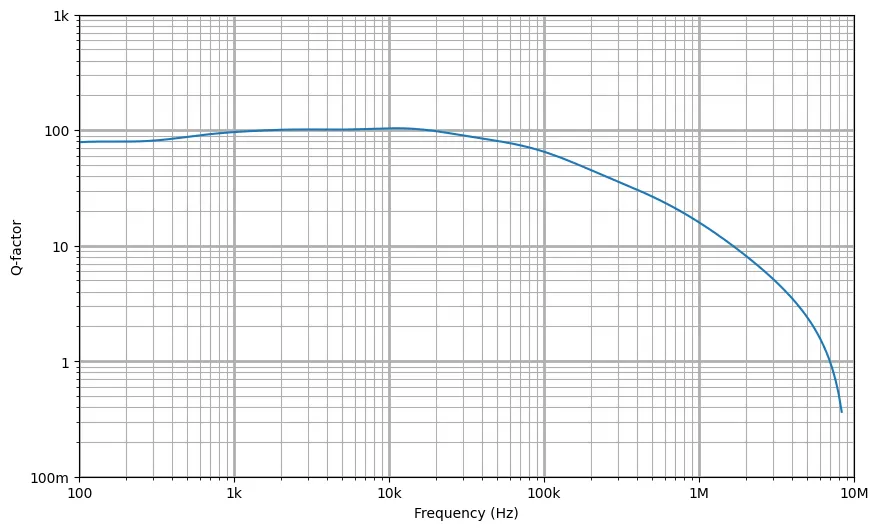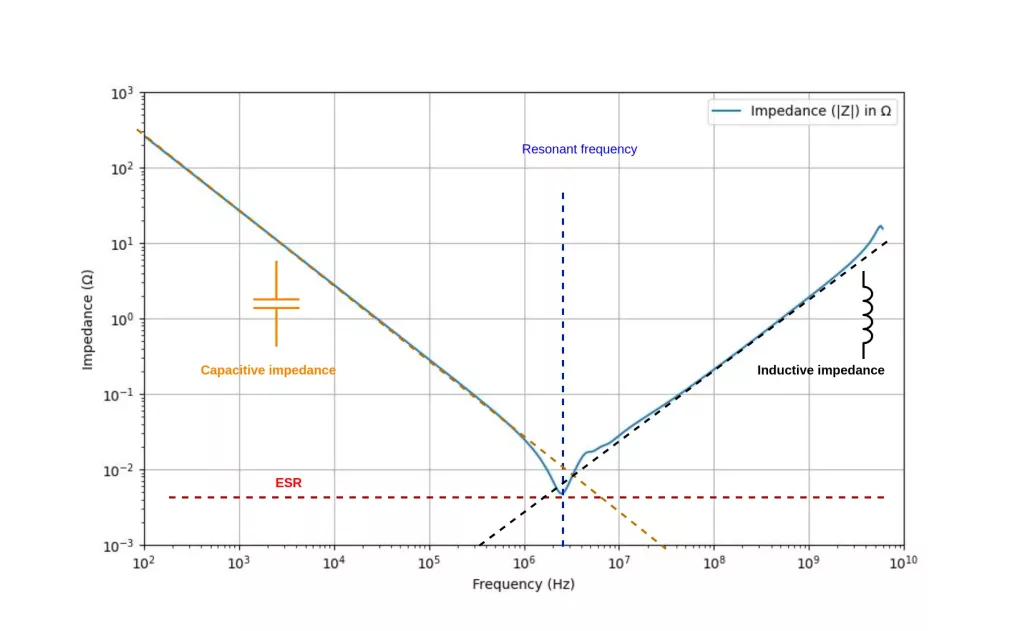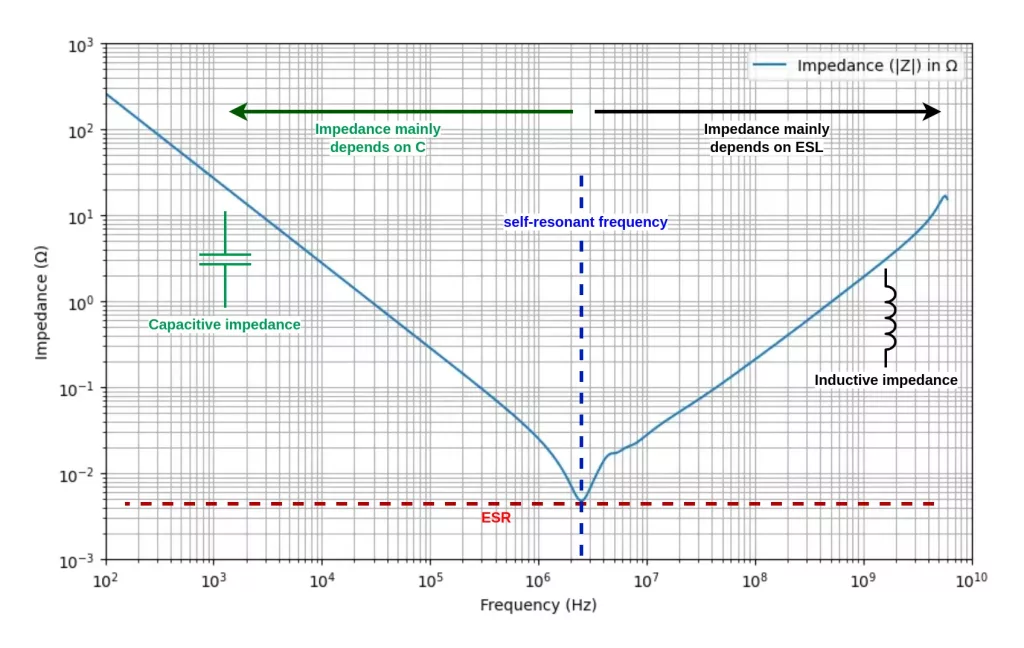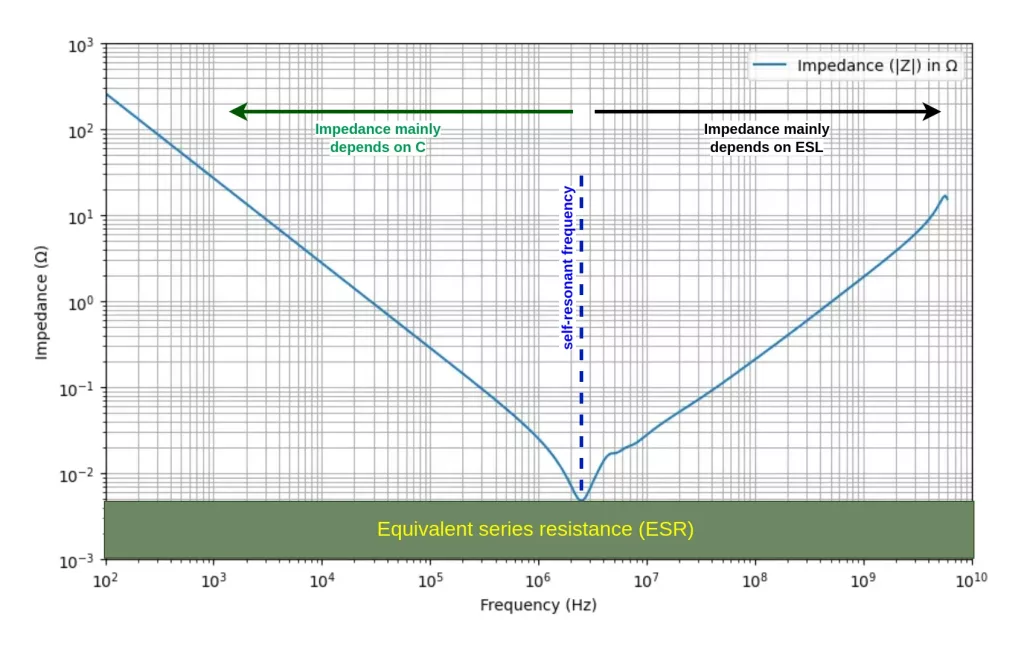The capacitor quality factor (Q factor) is one of the crucial parameters that engineers consider when selecting a component for a specific application. This parameter is closely related to dissipation factor (tangent of the loss angle) and equivalent series resistance (ESR). This article delves into the significance of capacitor quality factor, its calculation, and its implications in circuit design.
What is capacitor quality factor?
The capacitor quality factor, often denoted as Q, is a measure of the efficiency with which a capacitor stores and releases energy. This parameter quantifies the ratio of the energy stored in the capacitor to the energy dissipated over one cycle of operation.
A higher Q-factor indicates lower energy losses and improved efficiency in energy storage and release. Additionally, the Q factor is a dimensionless parameter, meaning it has no units. Figure 1 illustrates how the quality factor of a 1 µF ceramic capacitor varies with frequency.
Factors that affect capacitor Q factor

Some of the factors that affect the Q factor of a capacitor include the dielectric material, ESR, temperature, frequency, and voltage.
- Dielectric material: The type of dielectric material significantly impacts Q factor, with materials possessing lower loss tangents yielding higher Q factors.
- Equivalent series resistance: The ESR of the capacitor, which includes contributions from internal resistance and parasitic effects, inversely affects Q-factor. Lower ESR values correspond to higher Q factors.
- Temperature: An increase in temperature leads to higher dielectric losses and internal resistance, resulting in lower Q factors. Conversely, lower temperatures usually lead to reduced energy dissipation and higher Q factors.
- Frequency: Increasing frequency results in higher ESR and dielectric losses, consequently lowering Q factors. Conversely, at lower frequencies, the influence of ESR and dielectric losses may be less pronounced, resulting in higher Q-factors.
Relationship between Q factor, dissipation factor and ESR
The Q factor measures the efficiency of a capacitor’s energy storage and release, while the dissipation factor (tanδ) quantifies the ratio of energy lost to energy stored. The two parameters have an inverse relationship, Q = 1/tanδ.
The Q-factor and the equivalent series resistance (ESR) have an inverse relationship. A higher Q-factor corresponds to a lower ESR, indicating better energy storage efficiency and reduced losses in the capacitor. Conversely, a lower Q-factor indicates higher losses and a higher ESR value.
Implications of capacitor quality factor in circuit design
The quality factor has significant implications in circuit design, particularly in applications requiring high efficiency and minimal energy loss. Capacitors with higher Q-factors are ideal for such applications as they exhibit lower losses and provide better performance. High-Q capacitors are commonly used in RF circuits, filters, oscillators, and resonant circuits where precise frequency control and minimal signal loss are crucial.



